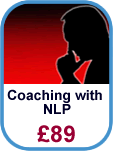Wednesday 30 July 2014
Effective Business Presentations
A common misconception about presentations is that they are there to inform the audience. When you are making a business presentation your key aim should not be to inform, but to encourage your listeners to agree to the proposition and concept behind the idea you are presenting to them. This could be a solution to a problem, a reason to purchase a product, a new way of approaching a topic or just to accept your way of seeing an issue. You should leave your audience with a sense that they should change their attitude, behaviour or thinking as a result of what you have presented to them. All this means that you need to persuade your audience and to do that you will need to make the presentation relevant to them while making them like you and accept what you are saying.
Now you could put together a very impressive presentation that makes people laugh and gets them clapping at the end. However, if there is no supported action following the presentation, then much as they will be impressed by your delivery, they still might not do anything different as a result and therefore your business presentation has not been a success. That doesn’t mean that presentations shouldn’t impress people or make them laugh; it’s just that this shouldn’t be your main aim. Too many presentations focus on providing information rather than getting action and results. What you should focus on can be summarised by the following points…
Emotional buy-in - It’s important to make the audience want what you are offering, which means you have to get their emotional buy-in. The best method of achieving this is to demonstrate the benefits of your offering and appeal to their needs and wants.
Aim for change - You want your audience to think, feel or do something different as a result of your presentation. Without some form of change, there’s not much point in making the presentation at all. You might argue that some presentations are ‘just for information’. If this is the case, perhaps you should just send an email or find another way to get the information across.
Show the benefit - Every person sitting in the audience is thinking ‘What’s in it for me?’ If you can’t answer this question then you are aiming to fail. Don’t describe what your offering is, but rather what it does…for your audience.
Ask for action - Your business presentation will be successful if the people in your audience do something differently as a result. This makes it important to be clear about the actions people can take to benefit from what you have said.
You will notice that all of the points shown here focus on the audience rather than you. This shows how important it is to write a presentation that appeals to the people you are presenting to, rather than focusing on things you think you want to get across.
This article is a short excerpt from the Trainer Bubble training course materials for Business Presentations, which you can purchase from our website at www.trainerbubble.com
Now you could put together a very impressive presentation that makes people laugh and gets them clapping at the end. However, if there is no supported action following the presentation, then much as they will be impressed by your delivery, they still might not do anything different as a result and therefore your business presentation has not been a success. That doesn’t mean that presentations shouldn’t impress people or make them laugh; it’s just that this shouldn’t be your main aim. Too many presentations focus on providing information rather than getting action and results. What you should focus on can be summarised by the following points…
Emotional buy-in - It’s important to make the audience want what you are offering, which means you have to get their emotional buy-in. The best method of achieving this is to demonstrate the benefits of your offering and appeal to their needs and wants.
Aim for change - You want your audience to think, feel or do something different as a result of your presentation. Without some form of change, there’s not much point in making the presentation at all. You might argue that some presentations are ‘just for information’. If this is the case, perhaps you should just send an email or find another way to get the information across.
Show the benefit - Every person sitting in the audience is thinking ‘What’s in it for me?’ If you can’t answer this question then you are aiming to fail. Don’t describe what your offering is, but rather what it does…for your audience.
Ask for action - Your business presentation will be successful if the people in your audience do something differently as a result. This makes it important to be clear about the actions people can take to benefit from what you have said.
You will notice that all of the points shown here focus on the audience rather than you. This shows how important it is to write a presentation that appeals to the people you are presenting to, rather than focusing on things you think you want to get across.
This article is a short excerpt from the Trainer Bubble training course materials for Business Presentations, which you can purchase from our website at www.trainerbubble.com
Subscribe to:
Posts (Atom)






























